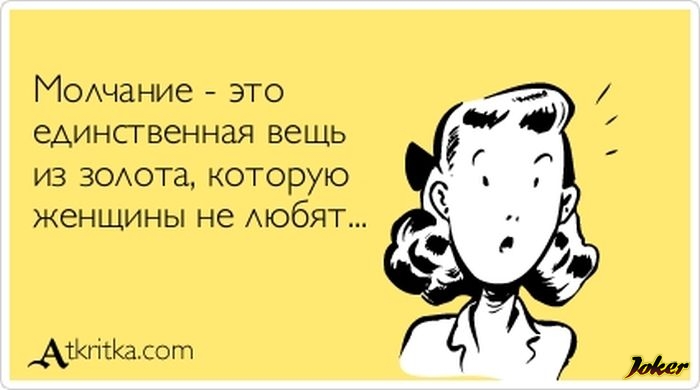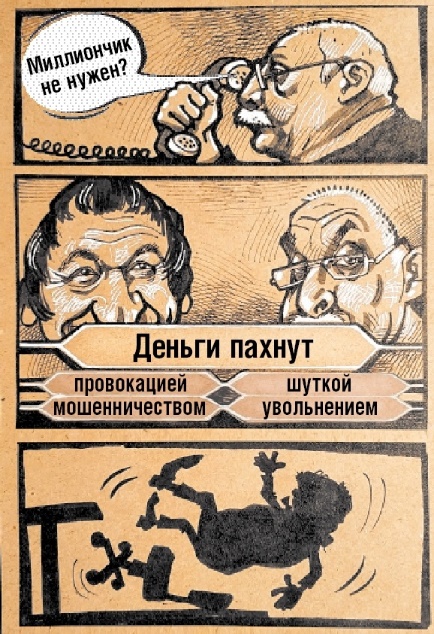Abstract
The article examines the speech clichés of the verbal part of Internet memes. Internet memes are a new social phenomenon. They are popular on the Internet, on social networks, and are of great interest for linguistic research. Memes testify to clip thinking, the property of which is the desire to obtain information as quickly as possible and without much effort, to understand what is depicted or written. Clip thinking is visual, quick, but superficial thinking. It is noted that the term “speech cliché” does not have a single definition. This concept includes proverbs, sayings, aphorisms, phraseological units, catchwords and expressions, advertising slogans, and slogans. An attempt is made to trace the reasons for the destruction of clichés. Methods and means of cliché transformation leading to the emergence of new meanings of the Internet meme are considered in detail. It is noted that the main method of destroying clichés is a language game. The ratio of the meanings inherent in the image and the text gives the meme a comic effect. Most Internet memes contain elements of humor, which is a tool to draw attention to pressing problems of our time and a way to creatively and wittily express one's attitude towards them. The factual material testifies to the fact that there is a new attitude towards the Russian language as a form of expressing one's creative potential. At the same time, it is noted that creolized texts are characterized by a tendency to destruction of authority.
Keywords: Creolized text, cliché destruction, clip thinking, internet meme, language play, speech clichés
Introduction
Internet culture has contributed to the emergence of new forms of communication – Internet memes. The concept of a meme was introduced by British biologist Richard Dawkins in 1976. In his famous popular science book on evolution, The Selfish Gene based on his theory of biological evolution, endowed the meme with the same properties as the gene. He considered the meme as a unit of cultural information that can spread (Dawkins, 1993).
Any statement, idea, image, symbol, photo, sound, picture, which are adopted by many members of the community, passing from one person to another, can be considered a meme. They are created and distributed by people and are used in various situations, regardless of the original context (Shchurina, 2012).
Internet memes are a relatively new social phenomenon (the tenth years of this century). They are very popular on the Internet, on social networks, especially among young people, and are of great interest for linguistic research.
Problem Statement
In modern Internet communication (Biryukova, 2014), memes are becoming more widespread, being one of its most successful means. They can be called a mirror of modern life, since they reflect its realities, becoming a kind of indicator of the relationship of society to events in the political, socio-cultural, and everyday spheres.
It is also a marker of modern clip thinking, characterized by the desire to obtain information as quickly as possible and without much effort, to understand what is depicted or written; therefore, short ready-made models appear, including heterogeneous sign systems.
New types of Internet communication cause emancipation of the individual on the Internet contribute to the elimination of psychological barriers and cause a desire for linguistic creativity. The user becomes not only a consumer of information but also its creator; a new attitude appears to the Russian language as a form of expressing his creative abilities (Vinogradova, 2004).
Research Questions
The language game, which is based on humor and comic beginning, is a vivid manifestation of the creative abilities of native speakers. There is always a deliberate violation of the linguistic norm in it. These deviations from the norm are characteristic of the verbal part of Internet memes. One of the practical incarnations of a language game is the destruction of speech cliches that form the subject of research.
The article uses the definition of the notion “cliché” given by Kopnina. A cliché is a ready-made turn of speech that concisely expresses a thought. Such a turn of speech is easily reproduced in the form of ready-made speech formulas, has clear semantics, has formal-semantic standardization, facilitates communication, briefly expressing an idea while saving effort and time (Skovorodnikov, 2011). Varieties of cliches are proverbs, sayings, aphorisms, phraseological units, catchwords and expressions, advertising slogans and slogans, famous quotes, favorite phrases, group templates. Many works are devoted to the study of the cliché phenomenon, but so far, the term itself does not have a single definition.
Purpose of the Study
The object of this article's research is one of the types of Internet memes – a creolized meme, which has two parts: verbal (text) and visual (photo, picture, and drawing). Verbal and non-verbal elements form a visual, structural, semantic, and functional whole, which makes it possible to comprehensively influence the Internet user (Biryukova, 2014; Levchenko & Izgarsheva, 2018; Voronko, 2012).
The subject of the research is the speech clichés of the verbal part, which have undergone various transformations.
The study aims to identify the main methods of breaking speech clichés in Internet memes.
Research Methods
To study the forms of destruction of speech clichés, general scientific methods of description and statistics were used: theoretical analysis, method of continuous sampling, methods of comparison and synthesis, method of structural and contextual analysis, classification method.
As a material for the analysis, we selected such genre varieties of creolized Internet memes as a demotivator, caricature, postcard, advise, strip comic, macro, and quote posted on the Internet for free access.
Findings
As you know, language is a dynamic system, all elements of which are subject to change. Changing speech clichés is defined as their “destruction”, which consists of replacing, updating, reducing, or supplementing the components of form and content.
On the newest material of Internet memes, the embodiment of the old traditions of language creation continues. For example, reworking proverbs has an ancient tradition. As in antiquity, so in our time there is a protest against the banal common sense and edifying tone of traditional “folk wisdom”. This protest has the property of distracting a person from difficult life problems (Walter & Mokienko, 2005).
Creative Internet users, without changing the language structure of the cliché, play with it with the help of the visual part of the meme. The relationship between text and picture, the visual and verbal parts, realize different meanings: the text is direct, the image is secondary, and vice versa. For example, demotivator Figure 01 depicts a person trying to catch a tube of glue “moment”. They give him advice: CAPTURE THE MOMENT. This action destroys the meaning of the Latin catchphrase “Seize the moment (Carpe diem)”, which means live in the present. The ambiguity of the word moment (1 is a period, 2 is the name of the glue) and a picture illustrating the second meaning has led to the destruction of the cliché. The collision of meanings inherent in the image and the text gives the meme a humorous nuance.

Demotivator is the most widespread and popular comic genre on the Internet. It is an image consisting of a picture in a black frame and includes an inscription commenting on it, drawn up in a certain format.
The demotivators reflect a variety of socially significant and not very significant topics, presented in a comic, ironic or sarcastic vein. Most of the demotivators contain elements of humor, which are based on various techniques of the language game, which is a tool for drawing attention to topical issues. Besides, it is a way to creatively and wittily express their attitude to the problems of our time.
Th2 contains the encrypted proverb "Silence is gold": SILENCE IS THE ONLY THING OF GOLD THAT WOMEN DO NOT LOVE. The Internet user in this meme gets the additional meaning that women love gold jewelry.

The genre variety of Internet memes Atkardka is a drawing in pastel colors in the old style, located on the right side. And on the left is a funny inscription with a variety of texts that take on new meaning next to a suitable illustration.
The creators of Internet memes often polemicize and continue the thought of speech cliches in their way. For example, the verbal part of the demotivator in Figure 03: MONEY DOES NOT SMELL, BUT THOSE WHO DON’T HAVE THEM is the Latin dictum. It has undergone structural changes, as the word order. The continuation text is illustrated with a picture depicting people who, for various reasons, do not have money to live in normal human conditions.

The catch phrase “money doesn't smell (pecunia non olet)” belongs to the Roman emperor Vespasian, who ruled from 69 to 79 A.D. This is a disapproving statement about indifference to the way of getting money.
It is interesting to create a strip comic strip in Figure 04. This type of creolized text is a tape of several frames, lined up either in a row or in a square. As a rule, a comic contains 3, 4 frames. Most of the strips are devoted to a variety of life situations that potentially can and do happen to all users of the network.
The comic in Figure 04 consists of three frames. The plot develops as follows: the first frame depicts the famous master of the game “What? Where? When?” Alexander Druz, who is on the call. The text bubble contains the words “DON’T YOU NEED A MILLION?” The second frame already represents two characters – the same Druz and the editor of the game “Who Wants to Be a Millionaire?” Ilya Bera. The verbal part contains a modified Latin catchphrase-question without a particle of not: MONEY SMELLS and four words presented in the form of four options for answering this question asked in the game “Who Wants to Be a Millionaire”. Answers with meaning: money smells like PROVOCATION, FRAUD, JOKE, AND DISMISSAL. The third frame just shows the end of the story.
The story, taken from the material published in the publication “Interlocutor” No. 6 2019, is as follows. Editor-in-chief of the game “Who Wants to Be a Millionaire?” Ilya Ber accused the master “What? Where? When?” Alexander Druz to bribe him in order to find out the correct answers and collect the prize – 3 million rubles. In response to the accusations, Druz objected that he just wanted to play along. But this did not help both Druz and Bera were removed from participation in the programs of “Pervyi kanal”.

The Latin dictum “Life is short, art is eternal (Vita brevis, ars longa)” in demotivator 5 has a different ending: LIFE IS SHORT, WORK IS ENDLESS (Figure 05). Replacing the word art with the word work, rhymed synonyms have eternally and endlessly destroyed the popular expression, giving it a new, additional meaning. The photo in the picture confirms the idea of how difficult and long it is to dig a tunnel underground. The stylistic technique of hyperbolization enhances the image of the duration of labor. This work will end someday, and eternal life is attributed to art in the original saying.

Conclusion
The conducted research allows us to draw the following conclusions:
- In the process of analyzing memes, it was found that in these new speech genres of the Internet, the linguistic creativity of users who create new meanings for already established stereotypical clichéd units is especially clearly manifested.
- In the Internet space, the process of destruction of speech cliches is actively going on because consumers of mass culture are tired of traditional understandings of proverbs, sayings, persistent statements, and advertising slogans. Therefore, new meanings are invented with an element of ridicule. On the other hand, this process shows the inexhaustible meanings of traditional expressions, which are individually interpreted by everyone, while they do not break away from the specific scheme of the prototype that gave rise to them.
The destruction of cliches occurs in different ways; for example, phrases are played with the help of images, various structural changes are made in the texts, the techniques of a language game are used, leading to the creation of new meanings.
The development of new information technologies is changing the forms of communication. The scope of its distribution is increasing; new concepts are emerging in the field of Internet communication. Modern creolized texts form a special “demotivational type of thinking”, which is characterized by a tendency to destroy the authority and a derisive attitude towards serious things.
References
Biryukova, E. A. (2014). Internet communication as a means of intercultural communication: genre and linguistic features. Language. Literature. Culture, 6, 75–98.
Dawkins, R. (1993). Selfish gene. Mir.
Levchenko, M. N., & Izgarsheva, A. V. (2018). Creolized text in the Internet syste. Vestnik of the Moscow State Regional University, 4, 200–216. www.evestnik-mgou.ru/
Shchurina, Y. V. (2012). Internet memes as a phenomenon of Internet communication. Scientific dialogue. Yekaterinburg, 3, 161–173.
Skovorodnikov, A. P. (2011). Expressive means of the Russian language and speech errors and shortcomings. In: Encyclopedic dictionary-reference. Flint.
Vinogradova, T. Y. (2004). Specificity of Communication on the Internet Russian and Comparative Philology. Kazan (Volga Region) Federal University.
Voronko, V. P. (2012). The verbal component of a polycode text, its structure and functions. In the world of scientific discoveries, 11(3), 28–39.
Walter, H., & Mokienko, V. M. (2005). Anti-words of the Russian people. St. Petersburg.
Copyright information

This work is licensed under a Creative Commons Attribution-NonCommercial-NoDerivatives 4.0 International License.
About this article
Publication Date
29 November 2021
Article Doi
eBook ISBN
978-1-80296-116-4
Publisher
European Publisher
Volume
117
Print ISBN (optional)
-
Edition Number
1st Edition
Pages
1-2730
Subjects
Cultural development, technological development, socio-political transformations, globalization
Cite this article as:
Mikitenko, N. Y., Akimenko, N. A., Ochirova, V. S., Chedzhieva, Z. D., & Shkurskaya, E. (2021). Speech Clichés In Creolized Internet Memes. In D. K. Bataev, S. A. Gapurov, A. D. Osmaev, V. K. Akaev, L. M. Idigova, M. R. Ovhadov, A. R. Salgiriev, & M. M. Betilmerzaeva (Eds.), Social and Cultural Transformations in The Context of Modern Globalism, vol 117. European Proceedings of Social and Behavioural Sciences (pp. 1055-1061). European Publisher. https://doi.org/10.15405/epsbs.2021.11.141

